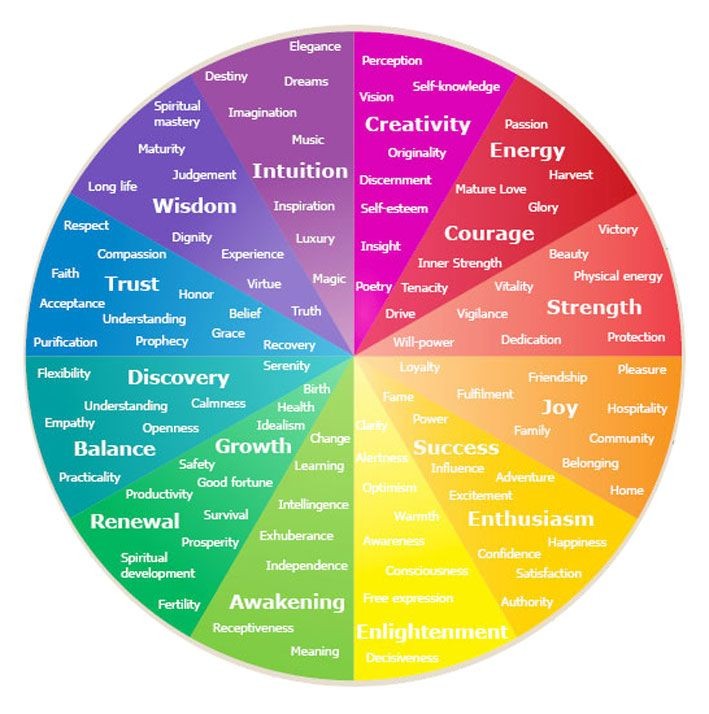Green Color Psychology

Color psychology is the study of specific hues and their effect on human behavior. Color plays an essential role in creating certain moods, conveying information and influencing decisions, feelings and behaviors. For instance, color preferences may have an influence on the products that people choose to purchase, the way they decorate their homes or the brands they are drawn to and the clothes they choose to wear.
Color psychology is also relevant in many ways to image consulting services. Many of us work with our clients on color analysis and choose not only the shades that suit them best but also how to combine those colors for maximum effect. Other consultants help clients with personal branding and professional presence. This includes how to project the messages they want to send in any given situation and color is one of the most useful tools we have. For example, if a client needs to look more authoritative and credible we will choose darker shades in her palette, among other changes; to look more approachable we may recommend softer or lighter shades.
What is the Color Psychology of Green?
If color is thought to play a role in your mood and your emotions and the messages you project, what is it about a color that elicits reactions? Take green for example. How does green affect you? In many situations, your reactions are related to the color’s intensity: its brightness or softness. It is an easy color for the eye to absorb in all shades and bright and light colors “advance” or are noticed first; deep and soft colors “recede” or fade a little more into the background.
As a general guideline people choose colors for their home that evoke a positive feeling or mood, such as painting their bedroom walls soft green, which may help with feelings of calmness and sleepiness. Teal, a deeper blue-green and turquoise, a lighter green actually suit many people and are also two very popular colors because of the pleasant affect the colors have on the mood.
Frequently, your reactions are the result of cultural influences and current or past experiences. For some, it often provokes an association with nature, recalling trees, plants and green grass. This eye-brain-memory association has been used extensively in branding to advertise and market environmentally safe cleaning and other products. As our concern over global warming caused by pollution and human intervention grows stronger, the green movement is building a massive following in the first world countries. We strive to be more environmentally responsible and healthy and our diets are now embracing greens, vegetables and fruit. Avocadoes for instance are enjoying quite a moment, even on toast!
Research has shown that the color may improve your reading ability and students have found that when a sheet of transparent paper is placed over what they are reading it will increase their reading speed as well as their comprehension.
In the 15th century, green was the choice for wedding gowns, because it is a symbol of fertility. When decorating, light tones are often used because of their calming effect. For instance, the term “green room” which is a holding area for those who are waiting to appear on a television show, is painted the color to help with concentration and calm the nerves of guests. Dark greens are soothing, so if you tend to feel nervous or anxious, consider wearing soft or deep shades to help you feel relaxed. This effect is thought to be due again to the association of green in nature.
In addition to its calming, tranquil and relaxing influence, the color in various shades is thought to affect a variety of emotions and behaviors including more negative associations. For example, in very ancient superstition, green is described as being associated with jealousy as the phrase “green with envy” might suggest.
Other connotations of green
Excitement – Although some people find that green is relaxing, other people may find it exciting, especially if it is a vibrant shade which could evoke Springtime, a refreshing sense of renewal after the drabness of Winter. Those who find green exciting seem to get energized, inspired, and feel motivated when they encounter bright greens.
Compassion – Some people who see green feel compassion and they see those who are wearing green as being helpful, kind, sympathetic, and caring.
Optimism – The color green evokes a feeling of hopefulness, responsibility, wealth, forgiveness, comfort and energy; all of which can be characteristics of someone who is optimistic.

What do Other Colors Mean?
Color perception is highly subjective and certain colors may have an ancient universal significance, such as the association of green and jealousy. As marketing specialists know, the way that our brain perceives color has an impact on and can manipulate our decision making. We are unconsciously persuaded by colors we like and reject those we dislike and this in turn affects not only in our mood and emotions but also our buying practices. It seems that we react to color much more than we realize and a study of color psychology and the meaning we assign to color would certainly enhance the quality of our daily lives.
To give you a better understanding of how color affects you and your surroundings, below is a brief explanation of what other colors mean.
Red – love, anger, and passion
Orange – happiness, energy, and vitality
Yellow – deceit, hope, and happiness
Blue – responsible, calm, and sadness
Purple – royalty, creativity, and wealth
White – cleanliness, virtue, and purity
Black – elegance, mystery, and evil
Gray – formality, sophistication, moody and conservative